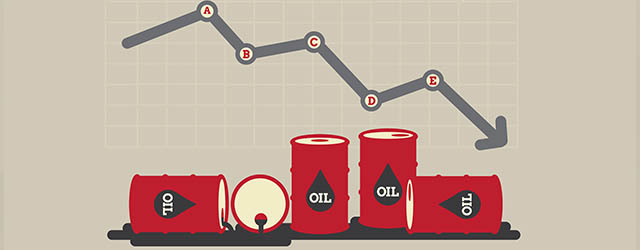Commodities | Oil prices have only slightly recovered from a new record low set at the end of August. But they are still 60% below their peak of 2014, which is putting pressure on US oil companies, with many pundits predicting a rapid overhaul of the industry.

“With much lower oil prices we expect to see more signs of stress in the energy sector,” says Robert Dye, PhD, senior vice president and chief economist at Comerica Economic Insights in Texas. “This fall, when bankers will be doing their twice-a-year evaluations of the balance sheets of these companies, I expect a tightening of credits to some energy companies coming at the same time when hedges are rolling off. This is the double whammy that some energy companies may be facing this fall.”
Given substantial declines in oil prices, producers in the United States are likely to face a sharp restructuring of their debt with a long stretch of bankruptcies and mergers, mostly among shale oil producers, which require a higher level of capital. To the surprise of many, this has not yet happened, because these companies are sustaining themselves on credit and predicting a rebound in prices.
“All companies are in difficulty,” says Fadel Gheit, a senior analyst covering the oil and gas sector at investment bank Oppenheimer. “No one is making profits in the current conditions. They need at least $15 to $20 more [per barrel] to keep going. I would not be surprised if companies finally throw in the towel and put themselves up for sale or discuss mergers to make their balance sheets stronger,” says Gheit. “They cannot [afford to] lose money for years.”
So far this year, only two US oil companies have filed for Chapter 11 bankruptcy: Austin, Texasbased WBH Energy, with assets and liabilities of $10 million to
$50 million; and Sabine Oil and Gas. However, the problem is believed to be much more widespread. Cash-hungry shale producers have funded their ongoing activity on bond sales and loans, gambling on a price recovery that has so far failed to materialize. “How long will they stay in business? It will depend on how long the sources of funding will be available to them,” says Gheit.
Alongside bank loans, an important source of funding comes from the junk bond market. According to Datalogic, so far this year oil and energy companies’ bonds have represented 15% of the total market with 54 deals valued at $31 billion, which is slightly less than 2014 levels when their share was 17%.
As much as the use of bonds and the presence of equity funds may have delayed the watershed moment in which the myriad of small US oil producers will have to adapt to the new reality of lower oil prices, that moment cannot be postponed forever. Industry pundits do not rule out some upward movement in oil prices, but no one expects prices to return to last year’s levels of $100 a barrel.



